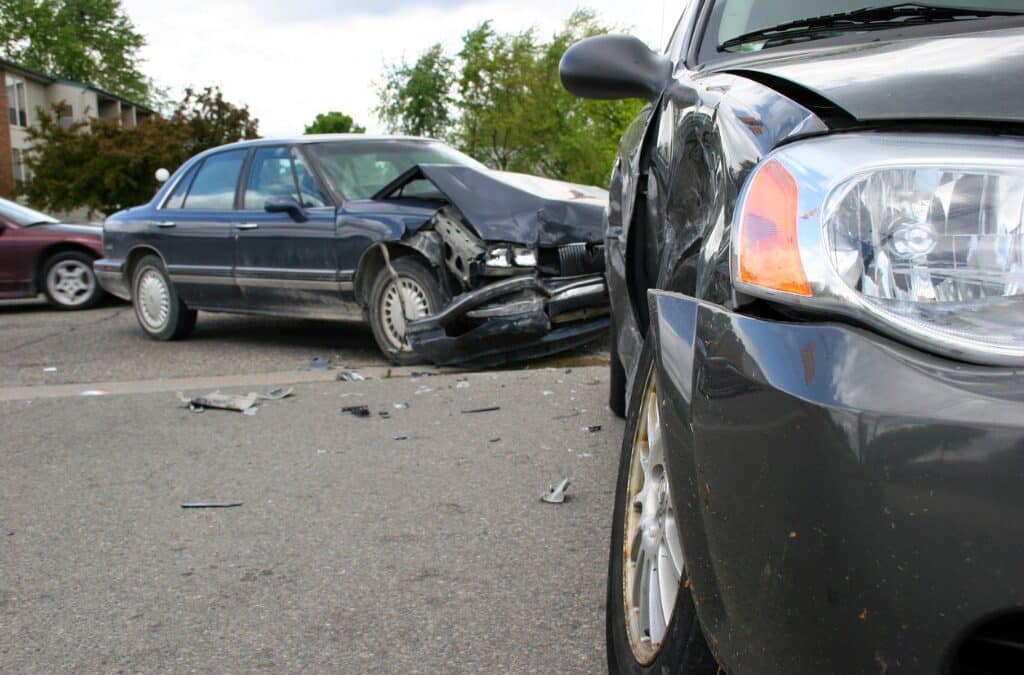Even the most careful drivers can get in an accident. According to the Association for Safe International Road Travel, the U.S. has the most road crash deaths of any high-income country. Over 46,000 people die every year in car accidents. Another 4.4 million are seriously injured. Every time you get out on the road, you risk an accident.
Knowing what to do if you get in an accident can help you stay calm and take care of yourself, your passengers, and anyone else involved. Follow these steps to stay safe and make the claim process much easier.
Stay Calm and Check on Yourself and Your Passengers
Accidents are stressful. Your emotions may be running high. Take a deep breath and assess the situation to see how badly you or your passengers are injured. The car is replaceable, but people aren’t. In the first few moments after an accident, your first thoughts should be dealing with everyone’s safety. Getting upset won’t help and may even make the situation worse.
If you or your passengers are injured, call 911 or ask someone to call for help. Assess the situation and determine whether it’s safer for you to move or stay put. If you can, you should get to safety. Wait for emergency responders to help if you can’t move. If there’s a fire or if you smell gas, you try to get out of the vehicle and get to a safe location.
Report the Accident
Even if it seems that no one is injured, you’ll still need to call 911 and file a police report. Don’t let the other driver talk you out of this. When you’re talking to the police, only give necessary information. Don’t take responsibility or place blame. Let the police officer decide who is at fault. If you have flares or cones in your vehicle, set them out to alert other drivers to the accident while you’re waiting for emergency responders.
Exchange Information
Yes, the police report will include the other driver’s information as well as any witness information, but it can take two to three weeks for this report to be ready. Get your own information from people involved in the accident and be prepared to provide your driver’s license and insurance information.
Take pictures with your phone to help you save the information. Avoid talking about the facts of the accident with the other driver or witnesses. Also, try to avoid placing blame or saying that you’re sorry.
Document the Accident
If you aren’t injured, get as much information about the accident as you can. Here are some tips.
- Take photos of all damages, your car, the other driver’s car, and any other vehicles involved.
- Take a photo of the other driver’s license plate.
- Try to get a video of the surrounding conditions, including elements like construction, weather, and road signs, as well as anything else that was going on when the accident occurred.
- Make some personal notes about the accident, such as how fast you were going, what you were doing in the car, who was with you, etc. You might even want to make a diagram of the scene, illustrating who was where and driving in which direction.
Some insurance companies have apps that can help you document an accident. Don’t forget to get the name and badge number of the police officer on the scene. If you are transferred to the hospital for medical treatment, ask a friend or family member to help you get this information.
Get Medical Treatment
If you called 911, emergency responders will check you out, even if you tell them you feel fine. Your adrenaline is surging, which can mask pain. Also, many soft tissue injuries don’t manifest right away. You may want to go to urgent care or the emergency room to follow up after a car accident. Make sure to keep copies of all medical visits and document any expenses to submit to the insurance company.
Follow Up with Your Insurance Company
Once everyone is safe and you have the information you need, call your insurance company to take the next steps. Don’t admit responsibility to the insurance company either. That will be sorted out through your claim. If you live in a no-fault state, your insurance will pay your bills no matter who is at fault (in most cases). If your bills are more than your insurance, you may want to talk to a lawyer about your options.
Make Your Vehicle Safer
TCS Upfitting can customize personal, commercial, or emergency vehicles with a variety of personal protective equipment and safety items that will help you stay safer on the road. From road flares to ballistic body armor to LED lights, we are proud to carry a wide selection of high-quality safety equipment that can enhance your ride.
We have worked with local police, fire, and emergency management teams, the military, tow truck companies, and the general public. Our team is familiar with all types of vehicles, from ATVs to work trucks to emergency vehicles. If you’re not sure which items fit your needs, our skilled professionals can help advise you to find the safety equipment that will solve your problems.
Accidents happen all the time. How you deal with an accident depends on the damages and your injuries. Keeping equipment on hand to stay safe when an accident occurs can give you the edge you need to help yourself and others while you’re waiting for first responders.
Contact us for upfitting services that come with a lifetime warranty!


